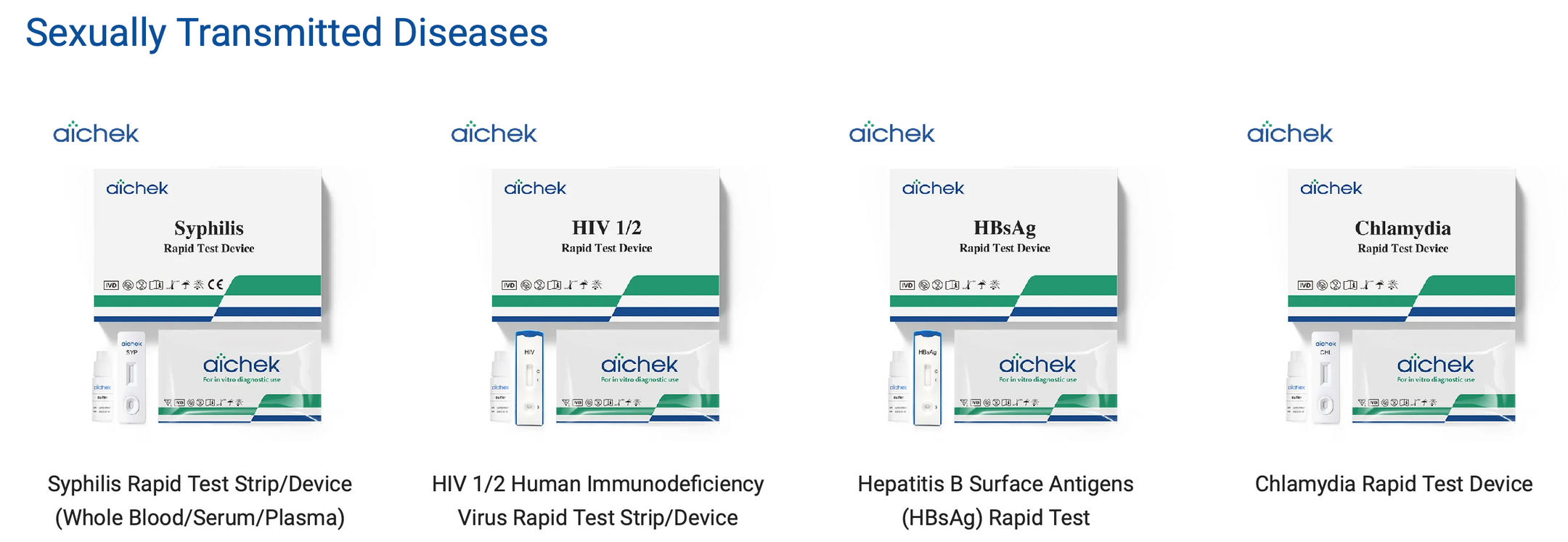
Get A Quote
What is STDs and the Power of Rapid Testing
2023-10-23
Sexually transmitted diseases (STDs) are a global health concern. They affect millions of people each year and can have serious consequences if left untreated. But the good news is that early detection is the key to effective treatment. In this blog post, we'll dive into the world of STDs, understand their impact, and explore the game-changing role of rapid testing in identifying these infections early.
Understanding STDs
STDs, also known as sexually transmitted infections (STIs), are a group of infections that are primarily spread through sexual contact. They can be caused by bacteria, viruses, or parasites. Common STDs include chlamydia, gonorrhea, syphilis, herpes, and human papillomavirus (HPV). If left untreated, these infections can lead to severe health problems, including infertility, organ damage, and an increased risk of HIV.
The Silent Epidemic
One of the significant challenges with STDs is that they often show no symptoms, especially in the early stages. This silent nature allows these infections to go unnoticed and untreated for extended periods. As a result, individuals can unknowingly transmit STDs to their sexual partners, contributing to the widespread prevalence of these infections.
Enter Rapid Testing
Rapid diagnostic test kits have emerged as a revolutionary tool in the fight against STDs. These tests are designed for quick and straightforward detection of infections. They use a small sample of the patient's bodily fluid, such as blood, urine, or a swab, to check for the presence of specific infection markers, like antigens or antibodies.
How Rapid Tests Work
The process of using an STD rapid test is relatively simple:
Sample Collection: A healthcare professional collects a sample from the patient. The type of sample may vary depending on the specific STD being tested.
Testing: The sample is applied to the designated area on the test kit, which contains chemicals or antigens that react with the target substances.
Rapid Results: Within minutes, the test displays results. This is often indicated by the appearance of colored lines or symbols. A positive result suggests the presence of the infection, while a negative result indicates no infection.
The Advantages of Rapid Tests
Rapid tests offer several advantages in the context of STD screening:
Speed: Results are available within minutes, allowing for immediate confirmation and treatment.
Simplicity: The testing process is straightforward and can be conducted by healthcare professionals even in resource-limited settings.
Early Detection: Detecting infections in their early stages can prevent complications and curb the spread of STDs.
The Role of Confirmatory Testing: While rapid tests are excellent tools for initial screening, confirmatory testing at a certified laboratory remains crucial to ensure accuracy. This secondary testing helps minimize the risk of false positives and false negatives, which can occur with any diagnostic test.
Conclusion
STDs are a prevalent and potentially life-altering health concern. Early detection is the linchpin of effective treatment and prevention. Rapid diagnostic tests have transformed the landscape of STD screening, making it faster and more accessible than ever. By promoting early detection, these tests play a pivotal role in safeguarding public health and reducing the transmission of sexually transmitted diseases. So, remember, knowledge is power when it comes to your sexual health, and rapid tests are a valuable tool in that journey.

